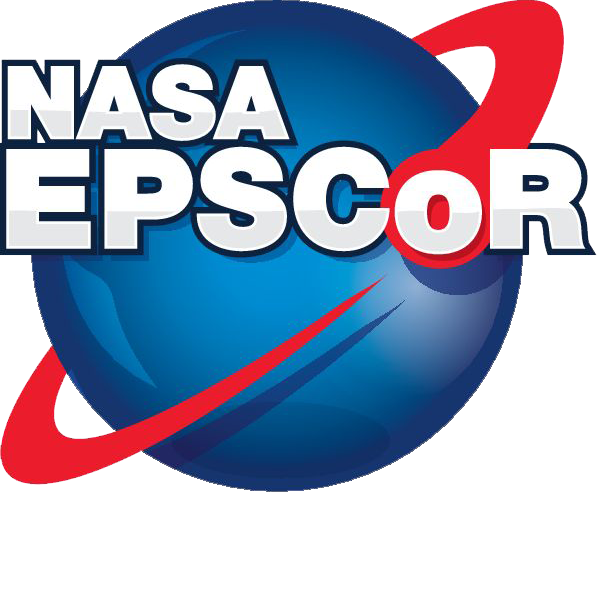
2022 NASA EPSCoR RID Projects
In-Process Monitoring and Mitigation of Defects in Fused Filament Fabrication
Principal Investigator: Borys Drach
Affiliation/Dept.: New Mexico State University, Department of Mechanical and Aerospace Engineering
Description: The proposed project focuses on investigation of in-situ quality control for the fused filament fabrication (FFF) additive manufacturing process (AM), and on development of a mitigation of detected defects via modification of print parameters. Affordability of the printers and easy access to their control software motivate the initial focus on the FFF process. The findings of the proposed research will directly contribute to the ongoing NASA EPSCoR CAN project EPSCoR CAN award #80NSSC20M0215 titled “Next Generation Additive Manufacturing for Space Applications,” which focuses on development of an integrated methodology for in-situ monitoring and optimization of processing parameters in additive manufacturing of metals. The proposed project will also be used as a training opportunity for students currently involved in the project and those who are interested in careers related to manufacturing.
CFD Investigations on Wing Color Thermal Effects on Mars Drone Flight Performance (Part II)
Principal Investigator: Samah Ben Ayed
Affiliation/Dept.: New Mexico State University, Department of Engineering Technology and Surveying Engineering
NASA Collaborator: David Berger
Description: Over the past few decades, various government and private programs have been developed for space exploration. Among the high interest exploration targets is the planet Mars. To design a drone suitable for Mars exploration, it is important to understand the Martian atmosphere and other properties for flight. Compared to Earth, the atmosphere of Mars is much thinner, and the temperature is also colder. Design methods enhance the performance and efficiency of drones which will extend their endurance and improve their utility in complex environments. Reduction of drag and potential power generation can be considered some of the main factors during the design process to conserve energy for the mission. A preliminary study done by the PI and her collaborators has investigated the thermal effects of wing color for Mars drones in different seasons. It is found that there is a considerable temperature difference if two extreme colors are considered at the top and the bottom of the wing. This temperature difference has to be adequately found through a comprehensive CFD procedure and the total drag would be rigorously computed. This has been developed in the first part of the project. Computational results partially align with the analytical model. This will need further investigation refining the computational model to exactly match the same model. The validated temperature difference could be of significant usefulness for thermal power generation using thermoelectric capabilities for different seasons. Future drone designs will benefit from the increased endurance through drag reduction and thermoelectric generation.
Very High Precision Timing Measurements of Particles Tracked in Space: Development of Low Grain Avalanche Detectors
Principal Investigator: Sally Seidel
Affiliation/Dept.: University of New Mexico, Department of Physics and Astronomy
NASA Collaborator: Regina Caputo, Jeremy Shane Perkins
Description: We propose to measure the characteristics of the timing resolution of Low Grain Avalanche Detectors (LGADs) as a function of proton fluence, for a series of prototypes spanning a range of dopant concentrations and geometrical options relevant to devices that could be deployed for space science. The measurements will be fed back into a design stream in order to produce charged particle trackers of the highest time precision combined with spatial precision and radiation tolerance. This project is consistent with the objects of the NASA HEOMD, SMD, and STMD directorates. It follows from a prior effect supported by the NMSGC that led to a publication on LGAD gamma ray tolerance. It can be extended naturally to future study of charge collection characteristics, which would be of a particular interest to our NASA collaborators. This work involves the efforts of two New Mexico doctoral students and two New Mexico senior researchers and uses facilities at the Los Alamos National Laboratory in a radiation campaign shared with a Los Alamos staff scientist.
Efficient Microgravity Heat Transfer
Principal Investigator: Peter Vorobieff
Affiliation/Dept.: University of New Mexico, Department of Mechanical Engineering
NASA Collaborator: George Suarez
Description: In our original funded work with NASA EPSCOR we proposed to demonstrate an efficient, noncontact method of transporting heat in microgravity. This new method does not employ any moving parts and requires only a modest power supply to drive low-impedance Helmholtz coils. This method has been extensively tested on Earth and there is strong evidence that it should work even better in microgravity environments. With the funding proposed here, we will be able to improve the diagnostics for the prototype beyond the scope of the original project by adding an infrared camera for flow visualization.
